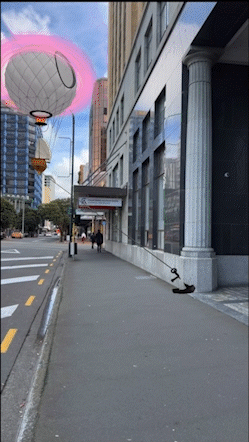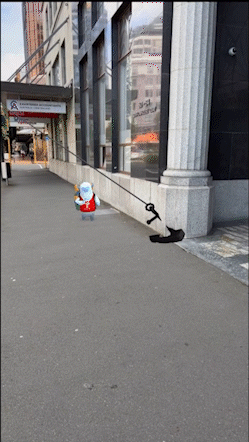September 22, 2022 – Niantic, a provider of augmented reality (AR) technologies and developer of Pokémon GO, has today announced the launch of Lightship VPS for Web, bringing its visual positioning system (VPS) to the 8th Wall platform.
The first-of-its-kind browser-based technology connects the real world with the digital one by anchoring WebAR content to locations and enabling virtual objects to interact with the space they are in. According to the company, this will help to make augmented reality experiences feel more personal, more meaningful and more real, and will give users new reasons to explore the world around them.
Lightship VPS for Web transforms everyday locations into experiential destinations. The technology essentially helps to unlock a physical location’s digital twin, which can then be augmented to create a range of AR experiences. This can help to drive traffic to a specific location, such as a statue in a park or a storefront in a city, to engage users in new ways that result in real world value.
Niantic has a lot of experience dealing with this sort of real-world engagement thanks to its hugely successful AR mobile game Pokémon GO, which managed to help businesses all over the world grow as a result of the placement of in-game points of interest, such as PokéStops and Gyms, which would draw users to different real world locations (such as coffee shops and shopping malls).
With the launch of VPS for Web and using the 8th Wall platform, developers, agencies, and brands can now create WebAR experiences that can only be engaged with at one location, strengthening the need to be at a certain place, or AR experiences that can be used at any number of VPS-activated locations on Niantic’s AR map, increasing the reach for this content. They can also create multi-location experiences such as AR scavenger hunts and geo AR games by combining a number of VPS-activated experiences within one project, according to Niantic.
“At Niantic, we believe that the real-world metaverse should get people exploring and connecting in the world around them,” said John Hanke, CEO of Niantic. “Bringing Lightship VPS to the Web will allow developers to build immersive WebAR experiences that are anchored to real-world locations all around us. The early demos from partners around the world are exciting to see and we know this is only the beginning. We can’t wait to see what location-based AR experiences our developer community will create with this new tool.”
Developers today want to build immersive AR experiences rooted in real-world locations. To do so, they have to first understand exactly where their users are and what they’re looking at. Lightship VPS uses Niantic’s AR map of the world to anchor AR content with centimeter-level precision at locations worldwide. By bringing the system to the 8th Wall platform, developers can now create VPS-enabled AR experiences with high levels of accuracy and precision that work directly within the mobile browser, requiring no app to download.
In addition to enabling location-based AR experiences, Lightship VPS for Web also gives WebAR developers, for the first time, access to the 3D mesh of a location for use in an AR scene. This capability will enable developers to create WebAR experiences that make use of occlusion and physics and will add a greater level of interactivity between virtual objects and the physical world, according to the company.
“Today marks a major milestone for the web and augmented reality,” said Tom Emrich, Director of Product Management, 8th Wall at Niantic. “Lightship VPS unlocks extraordinary value for developers by offering them a new tool to create WebAR experiences that recognize not only where their users are in the world but also gives them access to relevant information to better integrate the virtual content with the place it is being experienced. This is another first for the browser, unlocked by Niantic’s 8th Wall platform, and makes WebAR feel more real, more personal and even more connected to the real world than ever before.”
Developers can add VPS-activated locations to Niantic’s AR map, or immediately make use of over 100,000 VPS-activated locations available at launch, to build their own location-based WebAR experiences. VPS-activated locations are not just streetscapes or public landmarks, but rather a collection of publically accessible places that include parks, paths, local businesses, and more.
Built together, as a community, Niantic’s AR map is powered by scans of real-world locations from developers, surveyors, and players. The community has contributed millions of locations, photos, and scans, which the company states is all essential data that make it possible to serve localization with Lightship VPS.
Lightship VPS for Web is now available to all 8th Wall developers. To discover some of the first Lightship VPS for Web experiences created by 8th Wall developers for VPS-activated locations in Tokyo, Paris, London, Vienna, Sydney, New York, Los Angeles and more, click here.
Image / video credit: Niantic / YouTube
About the author
Sam Sprigg
Sam is the Founder and Managing Editor of Auganix. With a background in research and report writing, he has been covering XR industry news for the past seven years.






